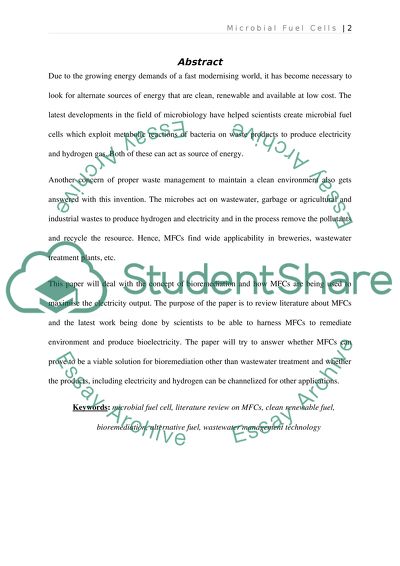Cite this document
(“Microbial Fuel Cells: Generating Power from Waste Literature review”, n.d.)
Retrieved from https://studentshare.org/biology/1402440-microbial-fuel-cells-for-electricity-production
Retrieved from https://studentshare.org/biology/1402440-microbial-fuel-cells-for-electricity-production
(Microbial Fuel Cells: Generating Power from Waste Literature Review)
https://studentshare.org/biology/1402440-microbial-fuel-cells-for-electricity-production.
https://studentshare.org/biology/1402440-microbial-fuel-cells-for-electricity-production.
“Microbial Fuel Cells: Generating Power from Waste Literature Review”, n.d. https://studentshare.org/biology/1402440-microbial-fuel-cells-for-electricity-production.


